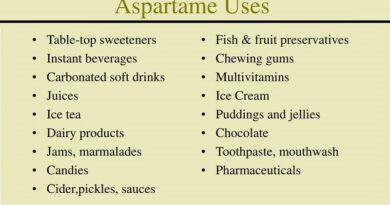Achieve Healthy Weight Loss: How to Shed 3-5 kg in Just One Month with a Simple Plan
Most people can achieve a healthy weight loss of 3 to 5 kilograms in one month, but it requires commitment, discipline, and a plan. Whether you’re aiming to slim down for a special event, improve your overall health, or boost your confidence, the key to sustainable weight loss is gradual, healthy lifestyle changes. In this guide, we will outline practical steps to help you lose weight effectively while preserving muscle mass and maintaining your energy levels.
1. Set Realistic Goals and Track Your Progress
Before diving into the specifics of your weight loss plan, it’s important to set realistic and achievable goals. Losing 3-5 kg in one month means you need to target around 0.75-1.25 kg (roughly 1.5 to 2.5 pounds) per week. This rate of weight loss is considered healthy and sustainable by most health experts.
Tracking your progress is crucial. Use a journal, app, or spreadsheet to record your daily meals, workouts, and changes in weight and body measurements. This will help you stay accountable and motivate you when you see the progress. It’s also important to remember that weight fluctuates daily, so focus on overall trends rather than day-to-day changes.
2. Focus on Nutrition: Eat a Calorie Deficit, But Stay Nourished
The foundation of any weight loss plan is creating a calorie deficit, which means burning more calories than you consume. However, it’s important not to drastically cut calories as it can lead to muscle loss, nutrient deficiencies, and a slower metabolism. Here’s how to create a balanced, sustainable calorie deficit:
- Calculate your daily calorie needs: Start by estimating how many calories your body requires to maintain your current weight using an online calculator. Subtract 500-700 calories from this number to create a manageable deficit without depriving yourself.
- Prioritize nutrient-dense foods: Fill your plate with whole, unprocessed foods like fruits, vegetables, lean proteins, whole grains, and healthy fats. These foods are lower in calories but rich in vitamins, minerals, and fiber, which help keep you full and nourished.
- Control portion sizes: Even healthy foods can contribute to weight gain if you eat too much of them. Use smaller plates, measure your food, and avoid eating directly from large packages.
- Limit sugar and refined carbs: Reduce your intake of sugary snacks, white bread, and processed foods, as they are high in empty calories and can cause spikes in blood sugar. Instead, focus on complex carbs like oats, brown rice, quinoa, and sweet potatoes.
- Stay hydrated: Drinking enough water is vital for overall health and weight loss. It helps with digestion, reduces hunger, and can prevent overeating. Aim for at least 8 glasses (around 2 liters) of water per day.
3. Incorporate Regular Exercise for Optimal Fat Loss
Exercise plays a key role in burning calories, building muscle, and improving overall fitness. To lose 3-5 kg in a month, your plan should include a combination of cardio, strength training, and flexibility exercises. Here’s how to design an effective workout routine:
- Cardio for fat burn: Engage in aerobic activities that elevate your heart rate, such as brisk walking, running, cycling, swimming, or dancing. Aim for at least 150 minutes of moderate-intensity cardio per week, or 75 minutes of vigorous-intensity exercise. High-Intensity Interval Training (HIIT) is also a time-efficient way to burn fat quickly.
- Strength training to build muscle: Lifting weights or doing bodyweight exercises like squats, lunges, push-ups, and planks helps preserve and build lean muscle mass while you lose fat. Muscle tissue burns more calories at rest than fat, so strength training can enhance your metabolism. Try to include at least two to three strength training sessions per week.
- Stretching and flexibility: Stretching helps maintain flexibility and prevent injuries. Incorporate yoga or stretching exercises at the end of your workout or on rest days to keep your muscles limber and improve circulation.
- Non-exercise activity: Increase your daily movement beyond scheduled workouts. Take the stairs instead of the elevator, walk or cycle to work, and stand up and stretch during breaks. Small increases in activity throughout the day can significantly boost your calorie expenditure.
4. Get Enough Sleep and Manage Stress
Sleep and stress management are often overlooked in weight loss plans, but they have an important role in your progress. Lack of sleep and high stress levels can interfere with hormone regulation, leading to increased hunger, cravings, and fat storage.
- Aim for 7-9 hours of sleep per night:
Prioritize sleep by sticking to a consistent sleep schedule, avoiding caffeine late in the day, and creating a relaxing bedtime routine. Proper rest allows your body to recover from workouts and maintain a healthy metabolism. - Practice stress-relief techniques:
Chronic stress can lead to emotional eating and weight gain. Try incorporating relaxation techniques like deep breathing, meditation, yoga, or even simple hobbies you enjoy to reduce stress levels. These activities can help keep your cortisol levels (the stress hormone) in check, that in turn aids fat loss.
5. Plan Your Meals and Avoid Mindless Eating
Meal planning is one of the best strategies to ensure you stay on track with your weight loss goals. When you have healthy meals and snacks prepared, you’re less likely to grab unhealthy, convenience foods.
- Meal prep in advance: Dedicate one or two days per week to prepping your meals for the days ahead. This could involve batch cooking proteins, chopping vegetables, and packing lunches for work. Having healthy meals on hand helps you avoid impulsive eating decisions.
- Eat mindfully: Pay attention to your hunger cues and avoid eating out of boredom or stress. Chew your food slowly, savor each bite, and try to eat without distractions like watching TV or scrolling on your phone. This can help you recognize when you’re full and prevent overeating.
- Avoid late-night snacking: Eating late at night, especially high-calorie foods, can lead to weight gain as your metabolism slows down before bed. Try to finish your meals at least 2-3 hours before bedtime to give your body time to digest.
6. Stay Consistent and Be Patient
Weight loss is a gradual process, and while it’s possible to lose 3-5 kg in a month, every person’s body responds differently. Some weeks you may see more progress than others, but the key is to stay consistent with your efforts and not get discouraged by small setbacks.
If you follow your lose-weight plan but find the scale isn’t moving, consider adjusting your caloric intake slightly, switching up your workout routine, or focusing on non-scale victories like improved energy levels, better sleep, or looser-fitting clothes.
7. Final Thoughts: Make It Sustainable
Losing 3-5 kg in a month requires dedication, but it’s important to do it in a way that’s healthy and sustainable. Crash diets or extreme exercise routines may offer quick results, but they’re often followed by weight regain. By focusing on balanced nutrition, regular physical activity, and healthy habits, you’ll not only achieve your short-term weight loss goal but also set yourself up for long-term success.
A well-structured lose weight plan is about creating lasting changes in your lifestyle. Stick to these principles, stay committed, and you’ll see results!




